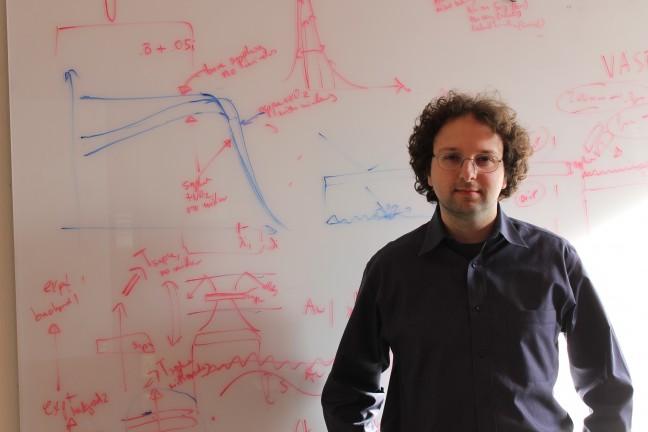Many would describe using science to defy the laws of physics as a rare feat. But for University of Wisconsin assistant professor Mikhail Kats, it’s just another day in the lab.
Kats is an assistant professor of electrical and computer engineering at UW and was recently named in Forbes Magazine’s annual “30 under 30” list for his myriad accomplishments in the field of optics.
The Forbes award recognizes 600 young entrepreneurs, innovators and entertainers in more that 20 categories, according to the Forbes website.
Kats received his Bachelor of Science in engineering physics from Cornell University, and later received his master’s degree and Ph.D. in applied physics from Harvard University, where he held a postdoctoral position for almost a year before coming to UW.
Kats said he was drawn to UW because of its high level of research in electrical engineering and physics, its ample supply of excellent students to aid him in his research and its wide range of research topics and interdisciplinary research opportunities, which permits him to freely pursue his insatiable and diverse interests as an applied physicist.
“One of the things that really sets the University of Wisconsin apart is that pretty much everything here is on the same campus,” Kats said. “As an applied physicist, it’s very important for me to be able to have close contact and proximity with people in all sorts of other scientific disciplines.”
Kats is currently using the freedom the university gives him to pursue one of the avenues that interests him most — the fascinating, and at times bizarre, frontiers of the scientific field of optics.
In his optical research, Kats’ primary interest is the study and development of nanoscopic optical devices called metasurfaces. In developing these metasurfaces, Kats said he and his colleagues meticulously construct perfectly flat surfaces roughly 1,000 times thinner than a human hair, which can be used to control light in almost arbitrary ways.
“We’re essentially putting down a surface that changes the way light bends when the light comes into contact with it,” Kats said. “We can use metasurfaces to manipulate the laws of reflection and refraction, make light bend backwards and do all sorts of other weird stuff.”
Another big interest Kats pursues in his research at UW is the development of what he calls “tunable thermal emitters.” Because an object’s optical properties are directly and fundamentally tied to its thermal properties, Kats and his colleagues have by extension been able to use the same concepts at play in their metasurface experiments to manipulate the ways in which objects give off light as a function of temperature.
Kats said he and his colleagues have been able to use their knowledge of the relationship between materials’ optical and thermal properties to design materials that perform bizarre feats — like inverting the relationship between light and heat.
“Imagine if you turned up the temperature on your stovetop and instead of glowing brighter, it got dimmer,” Kats said. “In much the same fashion, we’ve been able to develop materials that give off less light as they get hotter and more light as they get colder.”
Kats and his colleagues were — to his knowledge — the first team of scientists to perform this feat, he said.
This technology, Kats said, could have serious implications for the development of camouflage that is invisible to infrared cameras, as well as new materials that regulate their own temperature — without use of logic or computers — for use in the design of satellites and spacecraft.
In an age of consumer electronics and exciting new technologies, Kats urges students to remember that much of the technology in their pockets and at their fingertips would not exist without research conducted in university labs.
“It’s easy to forget that all of the underlying science and technology that goes into the latest technological innovations happens in university labs,” Kats said. “I think it’s important to remember that without the work that goes on in the labs of UW and other universities around the world, none of the technology we enjoy today would exist.”













